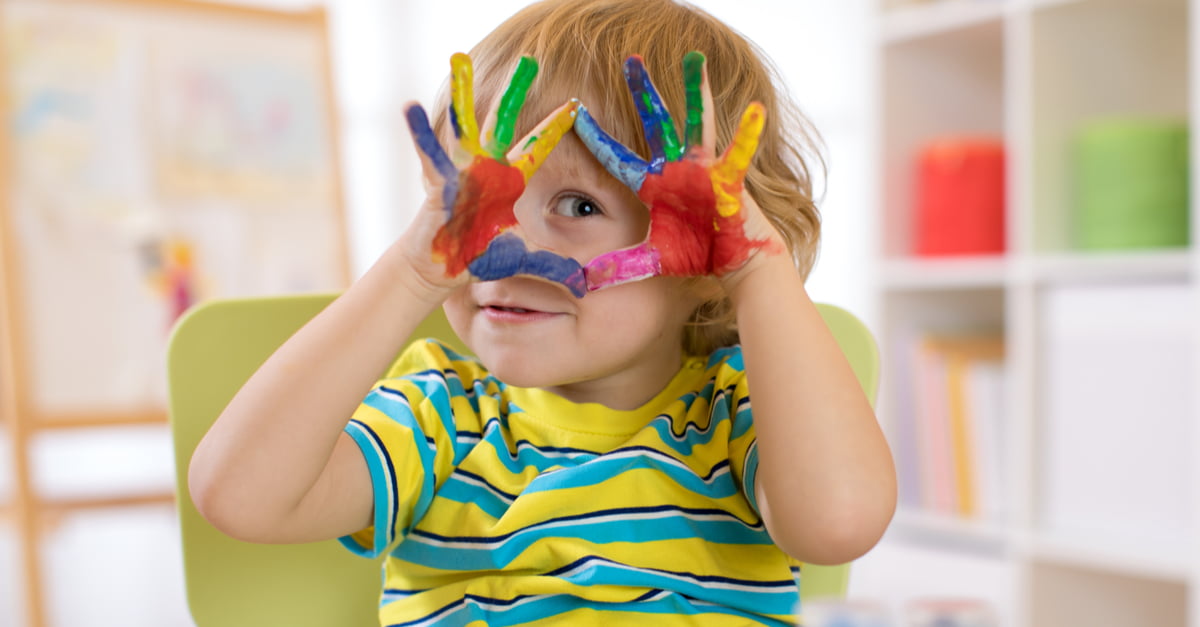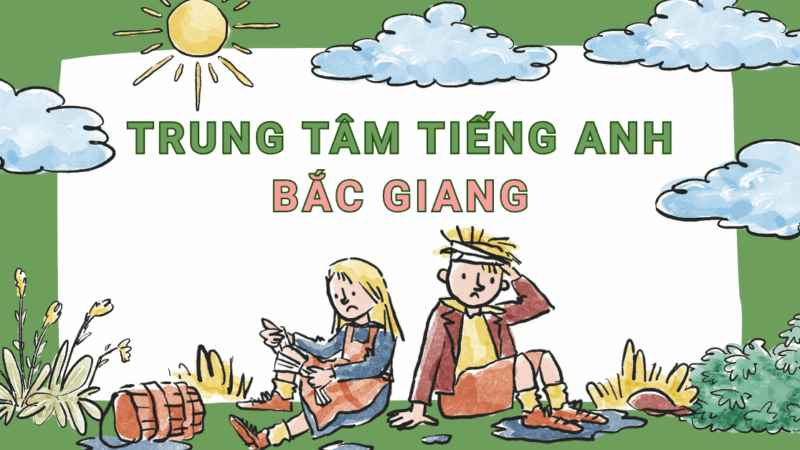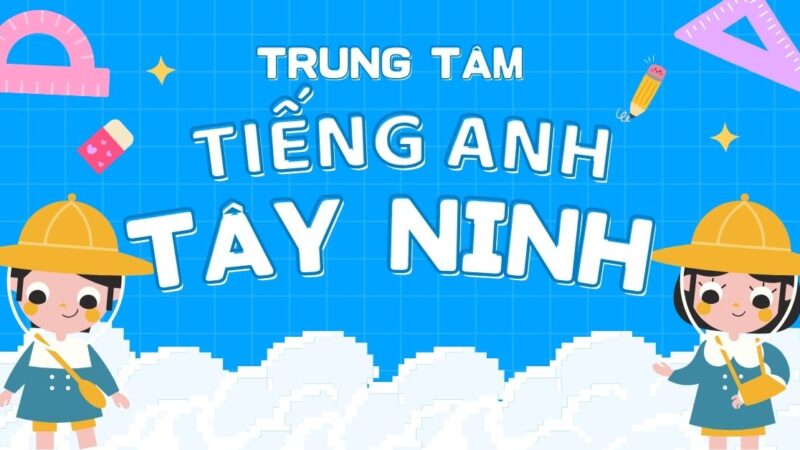Dạy bé nhận biết màu sắc: 3 phương pháp và 9 cách dạy hiệu quả

Teaching children to recognize colors and their names is an important part of the early education process, helping children practice observation skills from an early age. In this article, Nguyễn Tất Thành and parents will learn easy ways to teach children to recognize basic colors.
- Bảng chữ cái tiếng Pháp: Cách đọc và phiên âm cho người mới
- Áp suất khí quyển là gì? Công thức tính áp suất khí quyển | Vật lý lớp 8
- Gợi ý cách học toán dạng so sánh hơn kém lớp 3 đơn giản bé nào cũng nên biết
- Cách sử dụng đại từ nhấn mạnh trong tiếng Anh (Intensive pronouns) đơn giản nhất
- Hướng dẫn bố mẹ cách dạy bơi cho bé 4 tuổi an toàn
When should parents teach their children to recognize colors?
The world around us always has interesting things for children to explore and discover. In the first years of life, children often pay attention to basic colors that contrast with each other such as red or black. Parents can start teaching their babies to recognize colors when they are toddlers – about 18 months, even though at this age children cannot fully understand the concepts of colors and usually have to wait until 3 years old. Therefore, if you start teaching your baby to recognize basic colors and they don’t know much, parents should not worry or get discouraged!
Bạn đang xem: Dạy bé nhận biết màu sắc: 3 phương pháp và 9 cách dạy hiệu quả
Colors are an interesting but also quite complicated topic because they exist around children everywhere. Children can more easily distinguish between two different shapes than they can compare two different colors. The more “input” there is in the form of examples and practice exercises on color recognition, the better the child’s ability to perceive.
There is no need to wait until your child is 18 months old, parents can still start the process of teaching their baby to recognize colors as soon as they know how to pay attention to words by talking to them every day. For example, if a baby reaches for a red ball, parents can highlight the action by saying “You chose the red ball! That ball is red”… This is the “data” that helps children have their first ideas about the colors of everything around them.
Principles for teaching children to recognize colors that parents should know
Teaching children to recognize colors is not difficult. The following few principles on how to teach children to recognize colors will help parents have easier teaching orientation:

-
Teach your child to recognize the main colors first: Too many colors in a lesson can easily make your child feel “overwhelmed”. Parents should teach children basic colors first – at most about 2 colors at a time with colors like red, black, blue, yellow… then expand to other colors.
-
The lesson is repetitive: It will be difficult for children to remember the colors that parents teach right from the first lesson, but need to repeat every day, through many different examples. It’s as simple as, it’s the same color red, but today I introduce my child to a red shirt, tomorrow I’ll talk about red socks, the day after that I’ll talk about a red puzzle block… Intentional repetition like This helps colors stick deep in children’s minds.
-
Teach slowly in accordance with your child’s ability to receive: Each child’s perception is different, so please rely on your child’s ability to receive quickly or slowly to make appropriate adjustments, parents!
3 methods and 9+ ways to teach babies to recognize colors have been applied successfully by many parents
There are many ways to teach children to recognize colors, the most effective is to combine learning into daily activities such as playing, eating, drawing… the most important thing that parents should remember is to Based on your child’s ability to agree on appropriate methods for teaching your child colors.
Based on ability, unify lesson plans to teach colors to children
As shared, each child has a different worldview and perception. Therefore, we cannot rigidly apply the same way of teaching children to recognize colors in all cases. Teaching children to recognize colors, parents should pay attention to:

-
Teach at your child’s understanding speed: Color recognition lessons for 18-month-old babies will be different from those for 3-year-old babies. Age-appropriate learning activities will make your child more interested in learning.
-
Limit the number of colors learned per week: Many parents share that when they first start teaching their children to recognize colors, they only introduce one new color each week and have ways to name the week according to the colors so that their children can focus on the colors. learning like “green week”, “yellow week”, “red week”… Even when parents focus on teaching their children one color, their child’s ability to compare is also promoted. For example, during the week learning about the color blue, the mother puts a blue ball next to the yellow ball and the child can also compare this ball as blue, the other ball is not blue.
-
Use similar things to compare colors: The focus of the lesson is to introduce colors to children, so parents should limit factors that can distract their children, helping them focus maximally on colors. For example, instead of teaching children to compare green and red through a toy block and a ball, parents should take two toy blocks of the same size and different colors to teach their children.
-
Vivid, interactive lesson: Teaching children to recognize colors will be much more interesting if mothers know how to mobilize their child’s senses to participate in the learning process. For example, lessons about the color green are through the green vegetables you eat every day, through videos and songs you listen to… Nguyễn Tất Thành Junior application – English for beginners (0-10) years old has lessons about Colors with different levels are definitely useful learning tools that parents can equip their children with.
Teach children to recognize colors by incorporating learning into daily activities
Teaching children to recognize colors by combining “learning through play” through daily activities is a suitable approach for children to learn colors quickly. The more diverse the color learning activities, the more exciting it will be for children.
Teach children to learn colors through daily songs and videos
Vivid lessons with music and images will attract children much more than “vegetarian” lessons. Parents can play video songs about colors in Vietnamese or English for their children to help them remember more easily. Some interesting songs about colors that parents can play for their children are: Rainbow colors song, Colors everywhere, What color is it?…
.jpg)
Teach children through colorful dishes
Before giving your child a certain color dish, introduce that color to your child to strengthen their connection. For example, if a mother gives her child a piece of orange carrot, she can say “Let’s start eating orange carrots”; Or when mom brings her child a piece of green broccoli, she can say, “This is broccoli. Broccoli is green”…
Let your child choose the same pair of socks
Letting your child prepare their own personal belongings such as socks and clothes not only helps them develop their independence early on, but also creates conditions for them to be able to recognize colors more fluently. I have many pairs of socks with different colors in the basket. Mom, let me choose 2 socks of the same color according to their feeling and name the colors of the socks after I complete the task.
.jpg)
Color-guided dressing game
Similar to finding socks of the same color, parents can teach their children to recognize colors through the color-guided dressing game. The way to play is very simple, mothers just need to prepare a few sets of clothes, dresses with some accessories and then ask their children to choose items of the specified colors.
For example, parents can tell their children “Please wear a green sleeveless shirt”; “You should wear a white dress”, “You should wear a yellow necklace”….
Find pictures with suggested colors
Parents, stick monochrome pictures on the wall and start a picture-finding game with your children. To create excitement and competition, give children a certain amount of time to find the picture according to the instructions, for example, complete in 10 seconds, 20 seconds, 30 seconds… depending on the child’s awareness.
Teach your baby to recognize colors through candy
Sweet and colorful candies are easy to create excitement for children. Parents can also use these candies as rewards at the end of the game if their children answer many questions correctly.

Teaching children to recognize colors through candies is extremely simple, parents just need to tell their children requests such as “Please help me get a yellow candy”, “I give you a red candy”, “Please give me a red candy”. Please give three blue candies”…
Use learning tools to teach your baby to recognize colors
The process of teaching children to recognize colors will be much more interesting if parents can take advantage of useful learning tools to help their children expand their thinking and language.
Use blocks of color
Color blocks are the easiest tool for children to learn to compare colors because blocks with the same shape will not distract children but only focus on color recognition. In addition to learning colors, these blocks are also used for children to make puzzles and create imaginary objects.
Learning applications help children recognize colors better
If parents are looking for an application that helps their children recognize colors and develop English language, Nguyễn Tất Thành Junior is the right choice. This is a learning application from a brand with over 10 million users from 108 countries and territories around the world. Color themes are divided into different levels, illustrated with vivid images, sounds, and videos suitable to each child’s ability. In addition to color themes, Nguyễn Tất Thành Junior also has many other interesting themes such as animals, vehicles, fruits… for children to explore.

In addition to Nguyễn Tất Thành Junior, Nguyễn Tất Thành Vietnam also develops many other learning applications to help children develop comprehensive language, thinking and emotional abilities from a young age with:
-
Nguyễn Tất Thành Stories: Application to help children master the 4 English skills of listening, speaking, reading and writing before the age of 10 with more than 1,000 interactive comics, more than 300 audiobooks, a systematic Phonics learning program…
-
Nguyễn Tất Thành Math: Application for learning Math in language according to the standards of the New GDT Program for Preschool and Primary School children applies active teaching methods, helping children form necessary Mathematical abilities.
-
VNguyễn Tất Thành: Application that helps children build a solid Vietnamese foundation and develop emotional intelligence (EQ) with a huge store of Vietnamese stories and audiobooks.
Coloring pen
Parents can buy their children a set of crayons and a coloring book for them to practice. Practicing coloring not only helps children recognize colors better, but also trains them to be meticulous and observe everything around them well. For the process of learning colors through coloring exercises to be effective, parents should try to spend time accompanying their children, teaching them colors that they do not know.
Colorful playdough
Using colorful playdough is another idea to help diversify children’s learning activities. If you’re teaching your child a specific color, let him play with that playdough. When your child is ready for more difficult lessons, give them a few different colors with specific tasks like “Can you make a red candy and a yellow candy?”, “Can I make a blue cake?”…
.jpg)
See more:
Notes when teaching children to recognize colors
Teaching children to recognize colors is a process, from the time they learn to walk until they go to kindergarten. To have effective and exciting lessons for your children, parents should not forget:

-
Be patient with your child: Each child’s perception is different. Parents, don’t be impatient if your child hasn’t been able to absorb everything you teach, but be patient and teach your child slowly so that he or she can absorb according to his or her ability.
-
Pay attention to your child’s excitement when learning: It will not be effective if parents teach when their child is not excited. Using learning applications and other supporting tools to diversify learning activities is an effective way to maintain your child’s happiness during the learning process.
-
Encourage your child: Parents’ praise, encouragement, and small rewards will be a great “catalyst” to help your child get excited and have more fun through each lesson.
Hopefully the information shared in the above article has helped parents have more good ideas for teaching their children to recognize colors. Follow the website Nguyễn Tất Thành.edu.vn every day to update more information about early education and other useful parenting information for parents!
Nguồn: https://truongnguyentatthanh.edu.vn
Danh mục: Giáo dục





